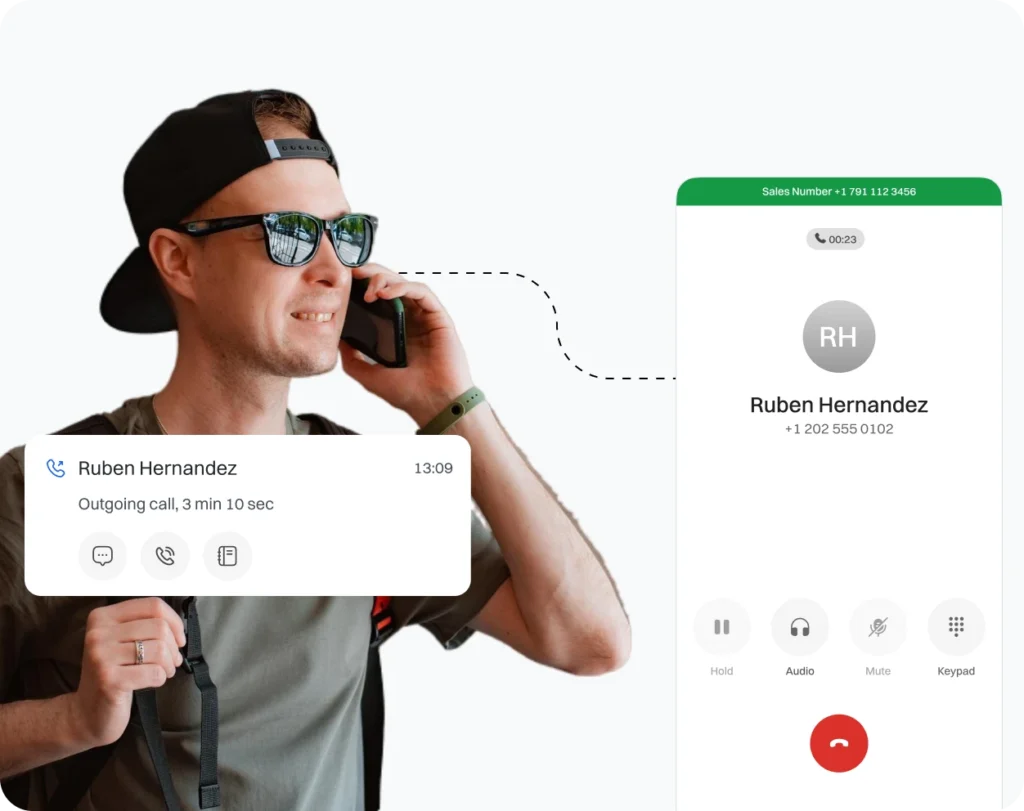
Building and maintaining strong client relationships is essential for the success of any business. One of the most effective ways to achieve this is by leveraging call history and recordings. By understanding client interactions better, businesses can enhance communication, address concerns more effectively, and provide tailored services. Here’s how to use call history and recordings to improve client relationships.

1. Enhancing Communication Quality
a) Review Past Interactions
Call recordings allow businesses to review past interactions with clients. By analyzing these conversations, teams can identify areas where communication can be improved, such as tone, clarity, and responsiveness.
Tip: Regularly schedule time for team members to review recordings, focusing on both positive examples and areas needing improvement.
b) Tailor Conversations
Understanding the context of previous calls helps representatives tailor their conversations to meet the client’s specific needs. For example, knowing a client’s history with your company or their previous concerns allows for a more personalized and relevant discussion.
Tip: Create a summary of key client information based on call history that can be easily accessed by all team members before client interactions.
2. Building Trust and Transparency

a) Provide Accurate Information
By having access to recorded calls, businesses can ensure that the information provided to clients is consistent and accurate. This reduces the risk of miscommunication and fosters trust.
Tip: Train staff to verify information against call recordings before reaching out to clients, especially regarding important updates or changes.
b) Address Concerns Promptly
When clients express concerns, having a recorded history of their interactions allows for quick resolution. By referencing past calls, representatives can address specific issues and provide solutions based on what has already been discussed.
Tip: Use call recordings to identify recurring issues across different clients, and address these proactively in future communications.
3. Improving Customer Service

a) Training and Development
Call recordings serve as valuable training tools for new employees or ongoing training for existing staff. By analyzing successful calls, teams can learn effective techniques for handling difficult conversations or improving overall client service.
Tip: Create a library of exemplary calls for training purposes, highlighting key skills or strategies that lead to positive outcomes.
b) Feedback and Improvement
Encourage team members to listen to their own recorded calls to self-assess and seek areas for improvement. This can foster a culture of continuous learning and improvement within the organization.
Tip: Implement a feedback system where peers can share constructive critiques based on recorded calls.
4. Data-Driven Insights
a) Analyze Trends and Patterns
Reviewing call history can reveal trends and patterns in client interactions. For example, you might notice common inquiries, concerns, or feedback that can inform product development or service enhancements.
Tip: Use analytics tools that integrate with your call recording software to generate reports on call frequency, duration, and common topics.
b) Identify High-Value Clients
By analyzing call history, businesses can identify high-value clients based on their engagement levels and spending patterns. Understanding these clients’ preferences allows for targeted outreach and personalized service.
Tip: Segment clients based on call activity and tailor your communication strategy accordingly, offering premium services or dedicated support to your most valuable clients.
5. Ensuring Compliance and Quality Control
a) Maintain Compliance
In industries with strict regulations, call recordings ensure compliance with legal requirements. Regularly reviewing recordings can help businesses identify potential compliance risks and address them proactively.
Tip: Implement a compliance monitoring program where a specific number of calls are reviewed each month to ensure adherence to regulations.
b) Quality Assurance
Using call recordings for quality assurance helps maintain high service standards. By monitoring interactions, businesses can assess whether representatives follow company protocols and provide the best possible service.
Tip: Establish quality metrics to evaluate call performance, such as customer satisfaction ratings or issue resolution effectiveness.
6. Facilitating Follow-Ups and Relationship Building
a) Timely Follow-Ups
Call recordings enable businesses to track the details of client conversations, making it easier to follow up on promises or commitments made during calls. This demonstrates reliability and a commitment to client satisfaction.
Tip: Create a follow-up system that assigns tasks based on the action items discussed in client calls, ensuring timely responses.
b) Personalized Engagement
When reaching out to clients, referencing previous calls can enhance engagement and make clients feel valued. This personalized approach can significantly strengthen the client relationship.
Tip: Use call recordings to remind your team of important details to mention in follow-ups, such as a client’s upcoming project or personal interests.
Conclusion
Using call history and recordings effectively can significantly enhance client relationships by improving communication, ensuring quality service, and fostering trust. By leveraging these tools, businesses can gain valuable insights into client preferences and concerns, allowing them to provide more personalized and efficient service. Whether for training, compliance, or engagement, the benefits of integrating call recordings into your client relationship strategy are substantial, ultimately leading to stronger and more successful client interactions.
